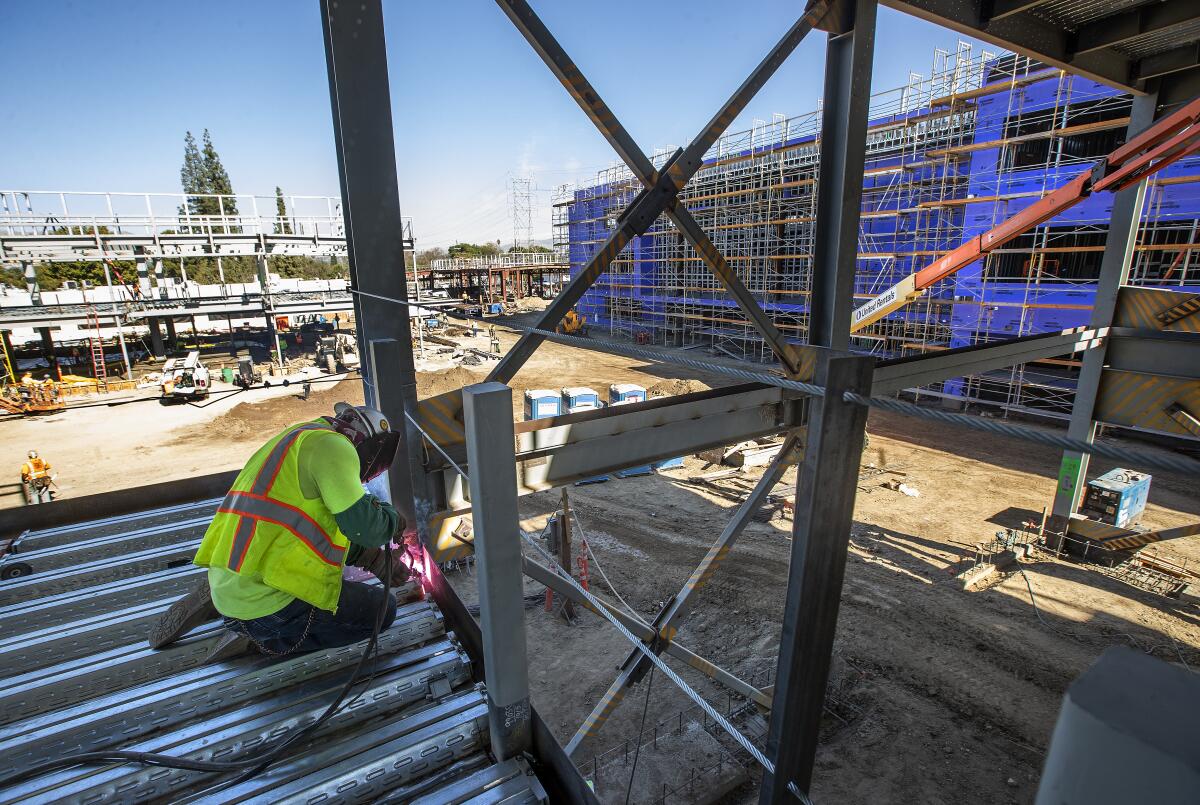Measure RR, L.A. school bond for modernization and technology, headed to victory

- Share via
Measure RR, which would provide $7 billion for building, repairing and modernizing local public schools, was headed to victory in what the county registrar’s office described as “semi-official results” Wednesday morning. To pass, the measure needed 55% of the votes cast within L.A. Unified boundaries, which extend beyond the city of Los Angeles. Ballot totals showed nearly 71% of voters choosing to support the tax measure, well above the needed margin.
“The students are the real winners today — this victory is theirs,” said L.A. schools Supt. Austin Beutner in a statement Wednesday. “Because of voter support, and the support of labor, business and community leaders, more students will get access to safe and updated schools and learning technology.”
“We acted boldly during these uncertain times by placing Measure RR on the ballot, knowing we needed to continue to address needs in school facilities,” he added. “We are grateful voters overwhelmingly supported this effort.”
School bonds in Los Angeles and statewide have not fared well lately, but supporters of Measure RR had reason for optimism — there was no significant opposition campaign and the November electorate was expected to be more tax friendly.
A possible parallel would be Measure Q, which the school district put on the ballot in 2008. That earlier $7-billion bond measure passed easily during the November election that brought Barack Obama to office. Then as now, liberal-leaning Democrats were especially inspired to vote. Some of the Measure Q money remains, but all of it is committed to projects, and there’s a substantial additional need for repairs and upgrades across the largest school district in California.
The long list includes work on ceilings, bus purchases, new air conditioners and seismic retrofits. Also on the list are mobile computers and other technology. Money also could be used to pay for a portion of the district’s response to the COVID-19 pandemic — although officials hope that funding for this purpose will come from elsewhere.
To make the bond tax more appealing — and less noticeable — L.A. Unified officials structured the overall tax rate for schools to remain about where it is now, through 2034, before the tax rate begins to taper off over the following 20 years. The annual property tax payment for schools during that peak period would be about $140 per $100,000 of assessed property value. This figure would include Measure RR and other previously passed bonds that taxpayers are still paying off.
If Measure RR were defeated, the tax rate for schools would decline sooner as earlier bonds are retired.
Liberal Democrats and Gov. Gavin Newsom supported Proposition 15, while California’s largest businesses strongly opposed it.
The share of that tax bill resulting from Measure RR by itself would work out, on average, to $22 a year per $100,000 of assessed property value.
The Measure RR tax rates are linked to the assessed value of residential and commercial properties. Measure RR proceeds, instead of going to the district’s general fund — where they could be used, for example, to pay for teachers and nurses — would pay for construction and facilities-related purchases. This kind of bond typically fuels the construction industry, and business and labor groups united in support.
The Howard Jarvis Taxpayers Assn. opposed the measure as an unfair additional burden, asserting that past bond funds have not been spent efficiently.
More to Read
Sign up for Essential California
The most important California stories and recommendations in your inbox every morning.
You may occasionally receive promotional content from the Los Angeles Times.















